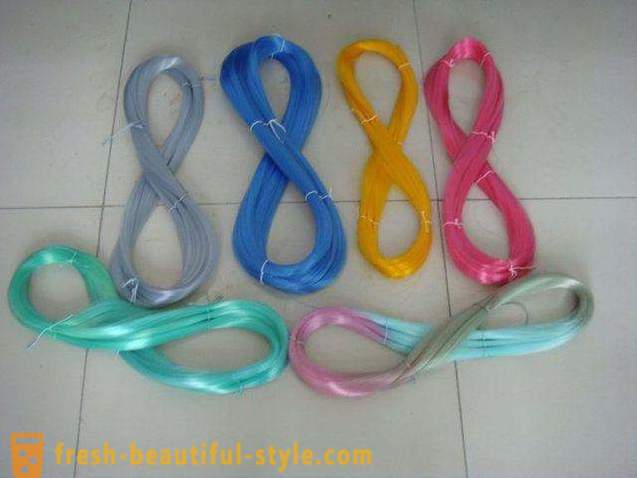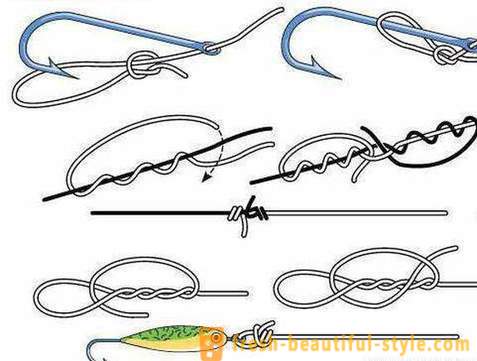Monofilament fishing. Classification and specifications
This device is known to people, probably, ever since mankind has learned to fish with the help of all sorts of tricks, and not just with his bare hands! Monofilament fishing - one of them. It is hard to imagine without the process of modern fishing, sports and amateur. When the ban on the network and harpoons, for example, monofilament fishing today - one of the components of virtually any modern gear in any form. Donka, spinning, float fishing rod - and it's only the most popular of the possible. In order to tackle worked as expected, required Monofilament fishing. Without it, any way and anywhere!

A bit of history
History woods goes to the far past, when data for the purposes of the people have started to use the tendon wild animals. Then, in the course went weaving of horsehair durable, able to withstand a lot of kilos of fish. Then horsehair inferior palm silk threads, cotton, flax. Only in the 19th century the first production of line machinery.
Nylon
History of nylon synthetic product as a tackle for catching fish begins in America (1937). It was conceived and implemented in the production of synthetic polyamide nylon-66, which became widely used in the production of unnatural fishing line. In a short time he is gaining popularity and almost completely displaces natural materials market. And hitherto nylon fishing line holds a leading position in the global market as an affordable and abundant material. Although there are various brands, the base of the fishing line is unchanged - all of the same polyamide fiber (sometimes special additive used). The main drawback of such a grove of nylon that they can undergo the negative environmental influences: UV rays, temperature changes. Result: The aging and drying, reduction of storage time.
Capron
Monofilament fishing from the same polyamide fiber in the Soviet Union (and later in Russia) called "monofilament". It went into production in Klin (1948), so called "Klinskaya". In fact, this production was a worthy response to Western standards (nylon-66). Modern nylon in its basic parameters does not differ from a family of nylon 66, 6, 7, rilsan and others. It is believed, not without reason, that it is still more exposed to UV light and negative environment. As a result, the chemical structure is destroyed and the fishing line service times are reduced up to 2-3 years.

Classification
In principle, all the line can be divided into two broad classes: monofilament and braided. About monoleski above has been said a lot. With regards wicker: invented in the 60's super-tough material Kevlar and Dacron suddenly found use for fishing. Today produced classical and sintered plaiting (stuff is made between a fiber to increase strength). Braided fishing line used for catching very large specimens (as a basis for leashes) and is quite expensive.
The diameters of the fishing line
Despite the fact that the fishing line exists weight characteristics (e.g., tensile load, elongation, abrasion resistance, permanent deformation), most anglers still used to navigate the selection of its diameter. It must be selected taking into account the strength and weight of the intended prey. The entire table diameters result in no sense: they fluctuate in a rather wide range. Incidentally, the fishing line marking, for example 0, 15, or 0, 1, does not mean that it has such a thickness (this also applies to wicker and monofilament). According to the table, at the first thickness should be 0, 065 mm, and at the second - respectively, 0, 062 mm. 0 2 - corresponds to 0, 074 mm and so on. All this is interesting only perhaps the most meticulous, as in the choice of many guided by the advice of seasoned or printed sources. For example, on the white bream or carp medium size - 0, 12, in the large bream - 0, 15, for the heavy carp on feeder can stand and 0, 30. But, as the polls show, many fishermen thickness 0, 25, the line is rarely used .
How to tie knots on the fishing line

Breaking load is considered to be no less important characteristic than the diameter. And in the nodes, this parameter is shown, as well as possible. In principle, any node weakens the strength of the fishing line (but there's a positive thing, because at the toe line was torn in this place, because it is better still to lose a leash than tackle the entire length of 20-50 meters). The nodes are distinguished: to connect the two ends of the line and to fix the bait. From all variety invented by fishermen, there are several the most durable, never of supply: Three fishing, double slide, a loop in the loop, clinch grinner, Palomar. And to learn to knit at least some must be properly trained!













































